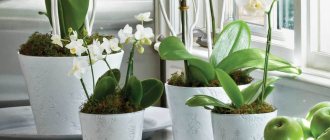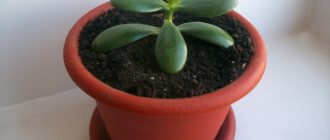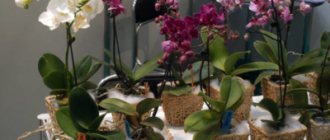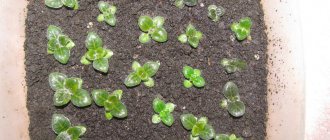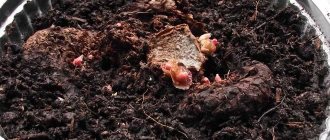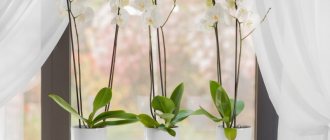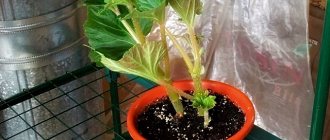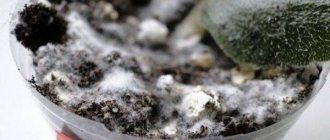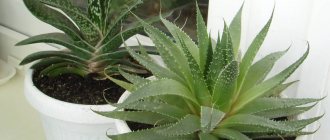The bulk of orchids grown at home belong to epiphytes. That's why great importance is attached to the flower pot, capable of providing the epiphytic plant with a sufficient amount of light and aeration in the root system.
Choosing a container for an orchid is as important a task for a gardener as caring for it. An incorrectly selected container for exotic pets will cause a lot of problems for the grower and can lead to the death of the exotic pet. So let's decide what kind of orchid pot should be and look at their photos.
Requirements for flower containers that must be met
Orchids belong to the category of plants in which the root system is involved in photosynthesis. Therefore, the penetration of sunlight through the walls of the container is of great importance. The container for epiphytes must be transparent.
The right pot must meet several more requirements:
- Given the natural growth conditions, the plant does not require a large container. It should be slightly larger than the root system.
- The container should provide good aeration of the roots and unimpeded drainage of excess moisture. To do this, there should be several holes at the bottom.
- The plant requires maintaining a certain temperature regime, so it is preferable to use plastic pots.
The right container for an orchid creates favorable conditions for the plant - as close as possible to its natural habitat.
The correct choice of container affects the well-being of the flower in the next few years, so you need to follow some rules.
Correct for common domestic species
Phalaenopsis is the most common type of flower that can be kept at home. This epiphyte will feel comfortable both in standard containers, the height of which is greater than the width, and in bowls with an open root system. The main condition is a large number of drainage holes and transparency.
Read more about which container to choose for phalaenopsis here.
For dendrobiums you need to choose small containers. The volume of the pot should correspond to the volume of the root system.
Cattleyas, on the contrary, need spacious containers with a wide neck - baskets or bowls.
Cymbidium roots grow vertically downwards, so the plant needs tall transparent pots with drainage holes. Otherwise, the development of the root system will be limited to the bottom of the container.
Should it be transparent or not?
A transparent pot is required only for phalaenopsis; the roots of this variety take part in photosynthesis. Other species can grow in containers of any color.
This container will be useful for beginning gardeners. Through the walls you can monitor the condition of the roots and control the need for watering.
Why and what is not suitable?
There are several options for containers, the use of which is strictly contraindicated for orchids of any kind.
It is not recommended to use:
- containers without ventilation holes on the sides and drainage holes at the bottom;
- metal;
- unstable or with a narrow neck.
Plastic pots
This type of pot is considered the best for growing orchids at home. There are several reasons for this:
- Plastic containers prevent the root system from drying out, as they create a greenhouse effect;
- Plastic containers can be easily placed in any hanging flower pots;
- Plastic is durable, it is able to serve for several generations of flowers;
- If there are few holes for drainage, then you can easily make them yourself without breaking the container.
If the flower is in a plastic container, then the question itself “how to care for an orchid in home pots” is no longer so pressing.
Options with photos
The range of products for gardeners offers a large number of different containers for growing. Before purchasing, you need to figure out which option will be most suitable for planting a certain type of plant.
Plastic
The most common and affordable type of pot. The orchid roots do not stick to the walls, sunlight penetrates well into the root system, and thanks to the transparency of the vessel, you can monitor the health of the roots. The unpresentable appearance is the only disadvantage of such a container. Suitable for all types of plants.
Glass vase for closed system
Orchids in a glass vase or flask look especially impressive and will be an excellent gift for any occasion. However, such a container is suitable only for those varieties that allow growth without soil (in or without water). Vandas and phalaenopsis are grown in this way.
It is not recommended to place a flower in a glass vessel on a windowsill or refrigerator to prevent excessive hypothermia.
Read more about how to grow crops without soil in this article.
Crown with holes
The design of such a container is designed specifically to meet the needs of capricious orchids. It consists of a small tray and rods extending from it, through which air circulates. Well suited for phalaenopsis and vandas.
The gaps between the rods are both plus and minus at the same time. The substrate will be washed out through these holes during operation. In addition, the container system will not retain moisture inside; it will quickly evaporate through the walls. You will have to water the flower more often. Also, “Crown” containers are more expensive than regular ones.
Double
Consists of two containers. The internal one is equipped with a large number of drainage holes and a footrest for the accumulation of liquid.
A double pot for orchids includes an automatic watering system. In such containers, it is necessary to constantly ensure that the liquid in the pan does not stagnate, otherwise this will lead to rotting of the roots. Flower growers have fallen in love with the double, inexpensive containers from Fiji.
Clay
Unfired clay retains and distributes moisture well in the root system. The substrate in such a pot dries out and does not rot. The containers have an impressive mass and are stable. The rough surface of the vessel is noted as a disadvantage. The roots will stick to the walls.
Dendrobiums, oncidiums, brassias and cattleyas grow well in clay containers.
Ceramic
An orchid in a ceramic pot looks aesthetically pleasing. The roots breathe well, so they require frequent watering. The inner surface is smooth, so the roots do not grow.
Wooden hanging basket on the wall
Pots made from natural materials are characterized by good air exchange and lightness.
The porous structure of the walls ensures good ventilation of the root system. Moisture evaporates quickly, so the orchid needs to be watered more often. Externally, such baskets look very aesthetically pleasing and are a beneficial addition to the plant. Thanks to the hanging design, it can be placed anywhere. Great for Vandas and Cattleyas.
Large and ideal for several plants
Paired orchids will be a wonderful addition to the interior; as a rule, two different varieties are used. Plants are planted in a single container or in one that has two special compartments.
Preference should be given to containers that are not deep and wide.
Special with automatic watering
The auto-watering function greatly simplifies the procedure for caring for the plant. This option will be especially relevant for flower growers who are often absent from home.
You can purchase a container with automatic watering at any flower shop. But you can design such a container yourself. The most popular option is a pot with a tray.
Bamboo
Bamboo containers are pots made from bamboo rods. Their composition brings the conditions for keeping orchids in the natural environment as close as possible.
The mesh design of the container provides good ventilation, which promotes uniform drying of the substrate.
Bamboo pots, as a rule, are not small in volume and are intended for growing large varieties.
Backlit
In conditions of lack of natural light, you can support the normal development and health of the flower using a backlit pot. Such models will be effective in autumn and winter. This design can be used as a night light. The only negative is the high cost.
An alternative to such a container would be to install artificial lighting. Read how to do this here.
Clay pots
Such containers have many advantages. Air and moisture easily enter them, causing the substrate to become completely saturated. This gives the plant the necessary beneficial elements.
But after some time, the porous structure of the clay becomes clogged with salts and minerals, which is why the flower begins to suffer. In addition, the roots of the flowers grow considerably and grow powerfully to the sides of the pot, which creates great difficulties for replanting.
But, if you really want to use a ceramic pot, then you can do the same as with a flowerpot - plant the orchid in a plastic pot, and place it in a clay pot.
- Risks of an individual entrepreneur
Orchid seeds: tips for choosing and rules for growing a flower from seeds. Tips for sowing and growing (120 photos + video)
Miltonia orchid: how to plant, care and grow a flower with your own hands. 125 photos of a special type of orchid
Before using a clay pot for its intended purpose, it must be disinfected. Namely:
- Warm in the oven (this cannot be done with enamel pots).
- Walk inside it with biofungicides.
Handmade
You can make a container for an orchid with your own hands. The main thing is to adhere to the basic requirements for pots. The material used is plastic or wood.
A plastic container is the simplest and most affordable option. You need to follow a few simple steps:
- take a plastic container as a basis: a bottle, bucket, etc., which can be purchased at a disposable tableware store;
- using a soldering iron or a heated nail, make many drainage holes on the bottom and sides;
- The pot for the plant is ready.
The video shows a manufacturing option:
Why is it important to choose the right vessel for growing an orchid?
Phalaenopsis, cattleya, cymbidium and other representatives of a large family are epiphytic or lithophytic plants that grow in the wild in tropical forests. Lithophytes are adapted to life on rocks and stones, while epiphytes settle on other plants and use them as support.
On a note! Orchids do not live off the host tree and are not parasites. Nutrition and moisture are obtained from the air.
In order for an orchid to bloom in the alien conditions of a city apartment, it is necessary to create optimal conditions. Despite selection, natural specificity takes its toll, and plants have to adapt to air humidity, temperature, watering, and nutrition. Flower growers can provide comfort for residents of the tropics by selecting a pot and the right substrate for orchids.
Soil: which is better?
They strive to make the composition of soil for orchids as close as possible to the tropical natural conditions of plant growth. The substrate should be light and loose.
The soil can be single-component and consist only of pine bark or multi-component, additionally including expanded clay, moss, coal, expanded clay, peat, coconut fibers, perlite, vermiculite, fern roots and charcoal.

